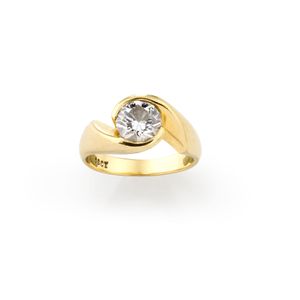Flight Worcester Yellow Plate with Pheasants and Butterflies
You must be a subscriber, and be logged in to view price and dealer details.
Subscribe Now to view actual auction price for this item
When you subscribe, you have the option of setting the currency in which to display prices to $Au, $US, $NZ or Stg.
- Roundel - A roundel is a circular disk, medallion or border on a plate or dish, on an object of furniture. A plate or dish will often have a central circular bordered decoration, termed a roundel. In furniture the word is often used instead of the word 'patera' to describe a turned circular decoration. In recent times use of the word has expanded to encompass any circular area on an object.
- Gilding - Gilding is a method of ornamentation whereby a thin sheet of gold metal is applied to items made of wood, leather, ceramics, glass and silver for decorative purposes.
For furniture including mirrors, the sheet of gold is usually applied over a coating of gesso. Gesso is a mixture of plaster of Paris and gypsum mixed with water and then applied to the carved wooden frames of mirrors and picture frames as a base for applying the gold leaf. After numerous coats of gesso have been applied, allowed to dry and then sanded a coat of "bole", a usually red coloured mixture of clay and glue is brushed on and allowed to dry, after which the gold leaf is applied. Over time parts of the gilding will rub off so the base colour can be seen. In water gilding, this was generally a blue colour, while in oil gilding, the under layer was often yellow. In Victorian times, gilders frequently used red as a pigment beneath the gold leaf.
Metal was often gilded by a process known as fire gilding. Gold mixed with mercury was applied and heated, causing the mercury to evaporate, the long-term effect of which was to kill or disable the craftsman or woman from mercury poisoning. The pursuit of beauty has claimed many victims, not the least of which were the artists who made those pieces so highly sought after today.
This item has been included into following indexes:
Visually similar items

A Victorian diamond and enamel locket bangle, dated 1865, the front of the bangle composed of twin oval-shaped blue guilloche enamel lockets, each mounted with an applied gold star, set throughout with old brilliant-cut and rose-cut diamonds, centring a di

A diamond single-stone ring, the round brilliant-cut diamond weighing 1.0 carat, set within a polished gold crossover mount, mounted in 18 carat yellow gold, ring size K. Accompanied by a report from the Gemological Institute of America (GIA) stating that

Set of three Royal crown Derby cabinet plates, with shaped border, each one painted with rural scenes, surrounded by cobalt border, factory mark and Hardy Bros retail marks, diameter 22 cm (3)

Two plates and a dessert dish in the manner of Spode or Coalport, circa 1810 each finely centred with reserves of pairs of bird species in enamel colours enclosed by gilded guilloche borders and bands with sprigs of foliage upon a wet blue ground, unmarked
